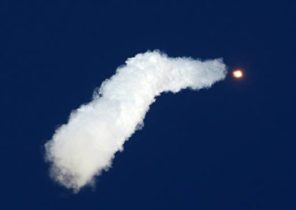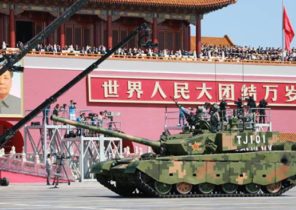Russian state media reported that the tank army of the Western military district were reinforced with additional crew protection in the Western strategic direction. In may, Russian defense Minister Sergei Shoigu said in an interview with news Agency TASS that the Western strategic direction remains “the most endangered species to military security of the Russian Federation,” adding that in accordance with the plan of activities for the years 2019-2025 now implemented a range of measures to neutralize potential threats.
“Separate guards motorized rifle Sevastopol red banner brigade named by 60 years of the USSR became part of the guards tank red banner army of the Western military district to perform the tasks in providing of defense of the Russian Federation on the Western strategic direction, — have informed in a press-service of military Department. — The brigade are the modern models of armament, military and special equipment, including tanks T-90A, BTR-82A armored vehicles, infantry fighting vehicles BMP-3, antiaircraft-missile complexes 9А34 “Strela-10” anti-aircraft missile and gun complexes 2С6М “Tunguska””.
This infantry brigade is stationed in the Novomoskovsk administrative district of Moscow.
Earlier in June, the chief of the Main operations Directorate of the General staff of the Armed forces of the Russian Federation, Colonel-General Sergey rudskoy said that the Ministry of defense systematically records a high level of military activity the United States and its allies in the NATO Alliance near Russia’s borders. He added that the Alliance has expanded the scale of its military exercises, which are definitely anti-Russian character.
Although the idea that NATO could attack Russia, most Americans seem far-fetched, the Russians do have cause to fear invasion from the West. Over the last few centuries, Russia has been repeatedly invaded countries such as Poland, Sweden, France and Germany.
The United States also took part in what can be regarded as a kind of “invasion” when the period of the Civil war in 1918 Russia was sent to the us military. The Americans landed in Arkhangelsk. This military campaign was named the expedition “Polar bear”, and its purpose was to prevent the German offensive and to assist in the opening of the Eastern front after Communist Russia accepted the terms of the Brest-Litovsk Treaty. However, instead of fighting against the Germans, American soldiers found themselves in a position where they had to fight the forces of the Bolsheviks.
After just two decades in the territory of the Soviet Union was invaded by the forces of Nazi Germany, who managed to advance deep into Mother Russia, take in the siege of Leningrad and get to the outskirts of Moscow before the winter stopped their advance. The Germans occupied many other Russian cities, and by the end of the war many of them were completely destroyed — including Stalingrad, which became the site of the fierce and bloody battles that changed the course of the war.
After the end of the cold war and the collapse of the Soviet Union Russia might, in many ways is more vulnerable than many of the former satellite States of the Soviet era, including Poland, Hungary and Romania, and the Czech and Slovak republics that are now part of NATO.
It is therefore not surprising that the Russian bear continues to sharpen their claws — reinforcing its naval fleet, conducting regular military exercises with new military equipment, including tanks T-14 “Armata” and the underwater supersonic missiles.
All this new military equipment of Russia should be viewed not as potential for offensive actions as a deterrent, which helps Russia to prevent another invasion from the West.
Peter Suciu publish your articles in many magazines, Newspapers and websites, lives and works in the city of Michigan, is the author of several books on military headgear, including a book titled “A Gallery of Military Headdress” (“Gallery of military headgear”).







